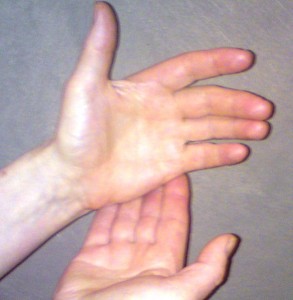Body falling apart. Pain from head to toe. Wrinkles and floppy bits. Hair not growing where it’s meant to. Memory fading. Energy depleting. Losing life partners, siblings and friends. Loneliness. Financial worries….
It is true that aging can be depressing and stressful at times. However, contrary to what many people think, it is not true that chronic and debilitating anxiety and depression are an inevitable part of old age. While aspects of aging can be distressing, it’s never too late to improve your psychological health and quality of life so that you can get the most out of this precious final [or not so final] chapter of your life.
How to Enjoy Your Old Age
Here are a few simple things you can do to help you find your spark again. [Actually, these strategies work for almost any age group.]
Enjoy the moment. People get depressed and anxious when they ruminate about the past or worry about the future. Try to turn off the trash TV in your head; or at least turn the volume down and position it in a far corner of your mind, so it can waffle on in the background without dominating your life. Then notice or think about things that give you pleasure, even if just in a small way. It might be the taste of your daily tea or coffee; the sound of bird song; the feel of your favourite slippers; or the smell of flowers. nbmbnb
Meditate. It’s taken a while, but mainstream western psychology and medicine have finally acknowledged the benefits of aware relaxation that our eastern cousins have been professing for millennium; that regular mediation tends to positively affect mind and body. Every day find a quiet place where you can sit comfortably, take your shoes off if it’s warm enough, shut your eyes, relax your body, and watch the ebb and flow of your breath, without controlling it. It’s that simple. Of course, most of us find it quite difficult to notice our breath without our mind wandering, but whenever that happens, as soon as you become aware of it, simply bring your attention gently back to relaxing with your breath. It can help your focus to repeat a relaxing or nonsense word or phrase, or count your out-breath to ten, then repeat. Some people find that visualising an image or colour helps too. Guided meditations on CDs or YouTube can be really useful, especially when you are starting out.
Ground yourself. Every day take your shoes off and stand or sit on the ground. Research indicates that grounding our bodies with the earth allows us to balance the energy in our negative ion starved bodies. This is shown to positively affect our physical and mental health. Grass, sand, dirt, concrete, and even tiles on a concrete floor are all good conductors, so they ground well. Wood and ashphalt don’t conduct as well, so are not as effective. Alternatively you could go for a swim, or have a bath or shower. Getting your hands dirty in the garden is another way.
Take action. If you are physically well enough, get out of the house and do something. Lack of action can increase depression and lead to physical unfitness. If you feel too flat and tired to do anything, that is a good sign that you need to do something. As long as it’s not going to harm you physically, light exercise can help you feel great… once you have motivated yourself to start. Make sure you check with your doctor, then, once you get the all clear, join a light exercise class or walking group. Sunshine is also a good mood lifter and is known to be important for physical health.
Move out of your comfort zone. Avoiding doing things that are scary tends to make them even more scary. This can lead to more avoidance and an increasingly restricted life. Break free from the traps that anxiety and fear of embarrassment might have created. Do something a little bit wild and adventurous, and tick a few items off your bucket list. How about going somewhere new, lunching with an old friend, joining a club, learning an instrument, doing a course, or going on a cruise?
Get help. If you are depressed or anxious or both, a good quality therapist can really help. Talk to your doctor about a referral to a free or affordable professional. Community organisations and telephone counselling services can be helpful too.
Exercise your brain. Studies have shown that older people who exercise their brains can think and remember better than their brain lazy counterparts. Damaged brain cells can’t regrow, but they can grow extra connections with use. New connections can enable us to create new thinking pathways. A study of elderly people who were taught computer skills showed that their brains actually increased in size as new connections grew and their brain cells pumped up. So make sure you do some crosswords, sukudo, or puzzles regularly. Start a scrabble or bridge club. Do a maths, writing, computer, photography or other course for fun. Read books. Update your computer skills and surf the net for knowledge. Use it or lose it.
Get creative. The other thing about brains is that it is important to exercise the non-logical side as well as the logical side. This is usually the right half of the brain in right handed people, and it is connected to the left hand side of the body. This side of the brain is where most of our creative thinking resides. Practicing creative activities, such as drawing, painting, pottery, woodcarving, or craft stimulate this side of the brain, again creating new pathways. Try not to be critical, just let go and enjoy the experience. If you really really want to give your left brain a workout, try drawing with your non-dominant hand. Creative pursuits are also known to improve mood and reduce anxiety. Basically, creativity is good for brains.
Do some good deeds. Helping other people can shift us out of our negative headspace and help us to feel that life still has purpose. You could do random acts of kindness for strangers, help a neighbour or loved one, or volunteer for a charity organisation. Becoming a regular volunteer can provide structure to your week, which is an important component for psychological health in retirement.
Laugh and smile. Readers Digest had it right all those years ago: laughter really is the best medicine. Think about funny stories from your past and write them down in a ‘Fun Book’. You could also add amusing experiences from recent times, even a funny thing that happened at the hospital. Share funny stories with friends and family and ask them to share some of theirs. Avoid the news and instead watch one of the many comedy shows on TV. Let go the negative judgement and allow yourself to have a good giggle.
Appreciate your life. Think about how lucky you are to exist in this fantastic experience we call life at this exciting time in history, and how lucky you are to have had the opportunity to enjoy so many decades full of so many experiences. What an amazing perspective you have. What an amazing being you are.





